Scores for Transformation
Özlem Altın, Quishile Charan, Judith Hopf, Laida Lertxundi, Rosemary Mayer

October Ghost, 1980. Rosemary Mayer. Courtesy of the Estate of Rosemary Mayer.
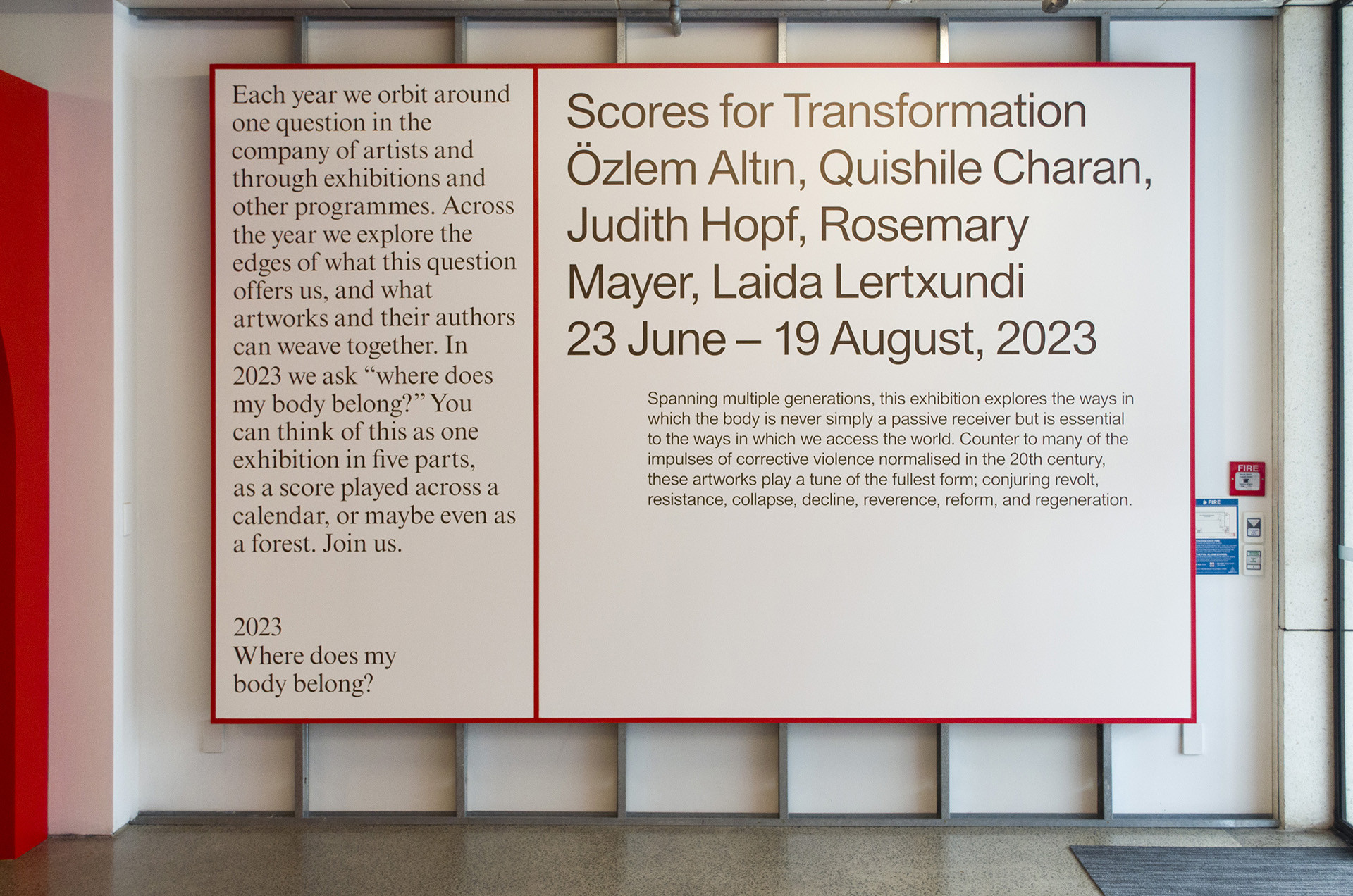
Scores for Transformation, 2023. Installation view.

Everything that's influenced my work/ me, circa 1973. Rosemary Mayer. Scores for Transformation, 2023. Installation view.

Scores for Transformation, 2023. Installation view.
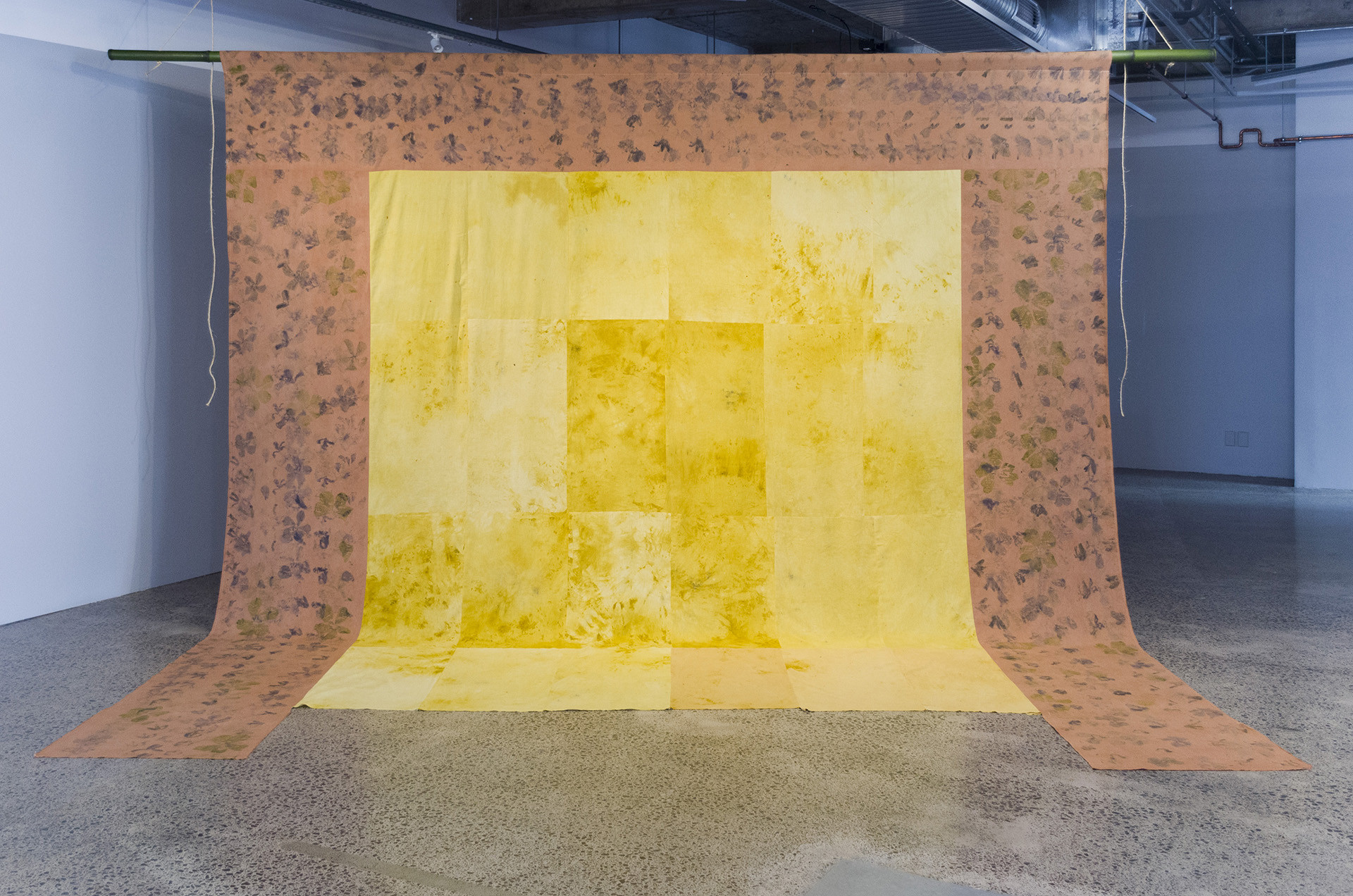
Araam, 2023. Quishile Charan.

Scores for Transformation, 2023. Installation view.

Hospital Bone Dance, 2006. Judith Hopf.

Midwinter Ghost, 1980-1981/2023. Rosemary Mayer.
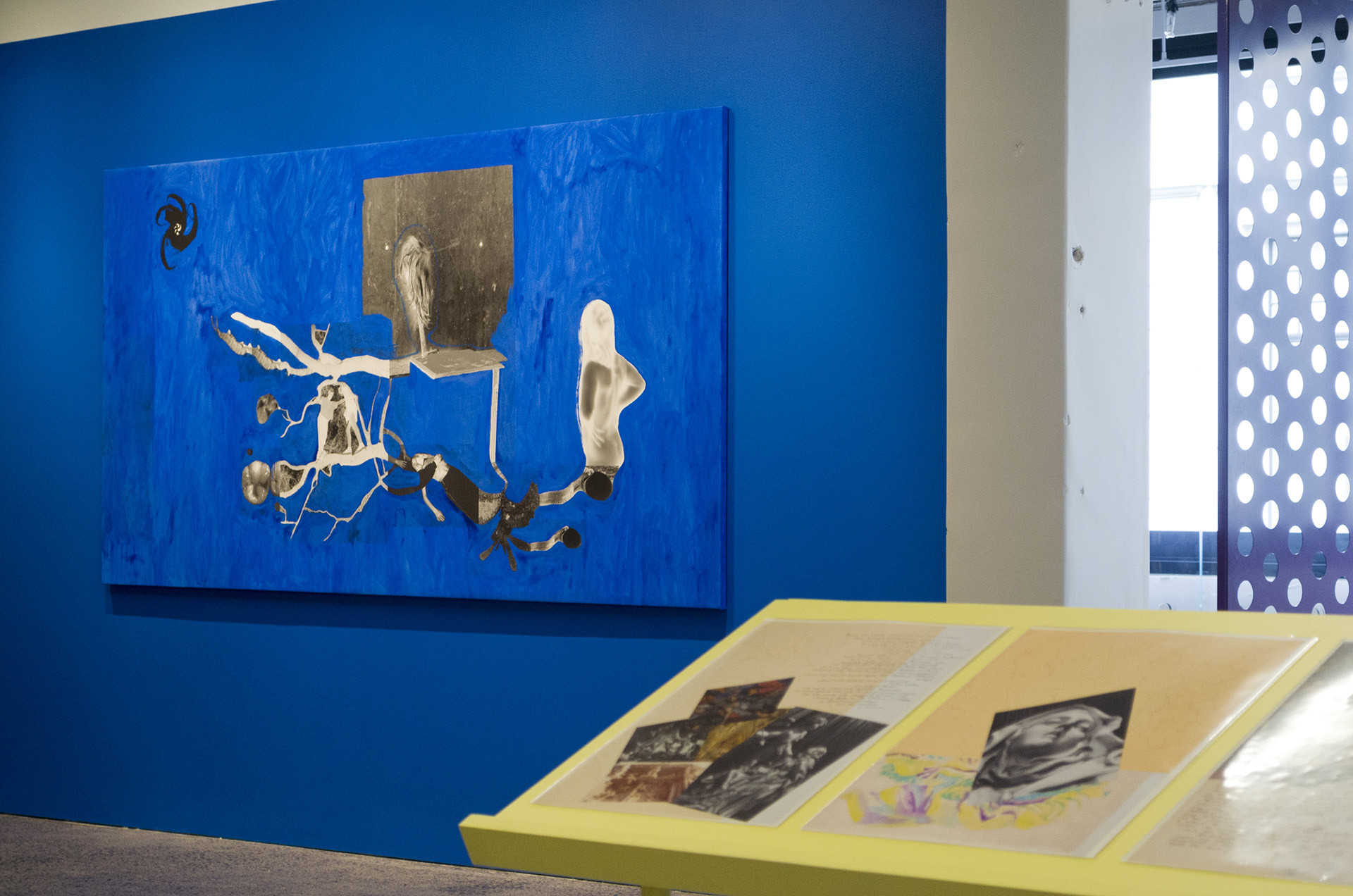
Scores for Transformation, 2023. Installation view.
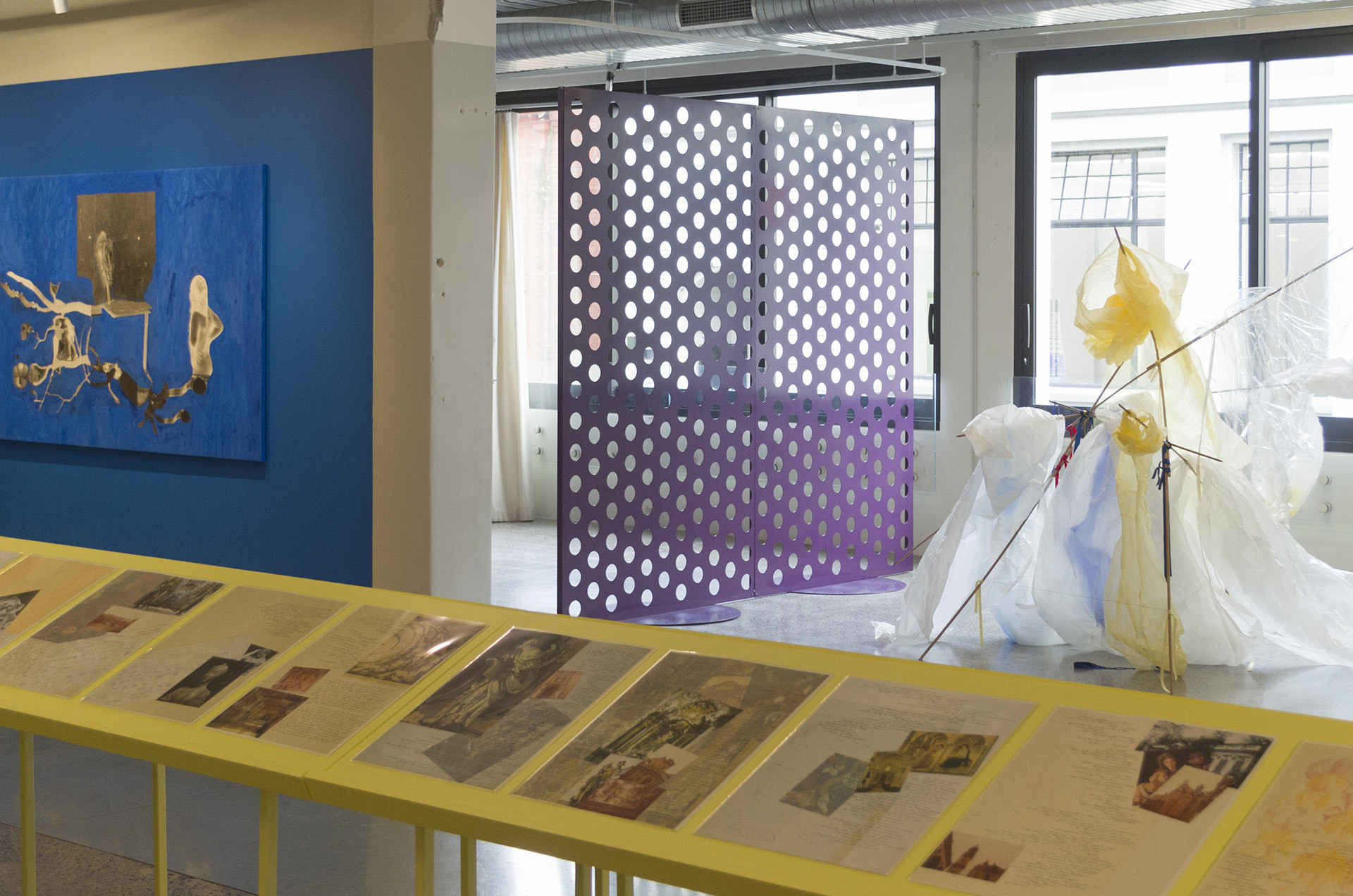
Scores for Transformation, 2023. Installation view.

Passages, 1976. Rosemary Mayer.
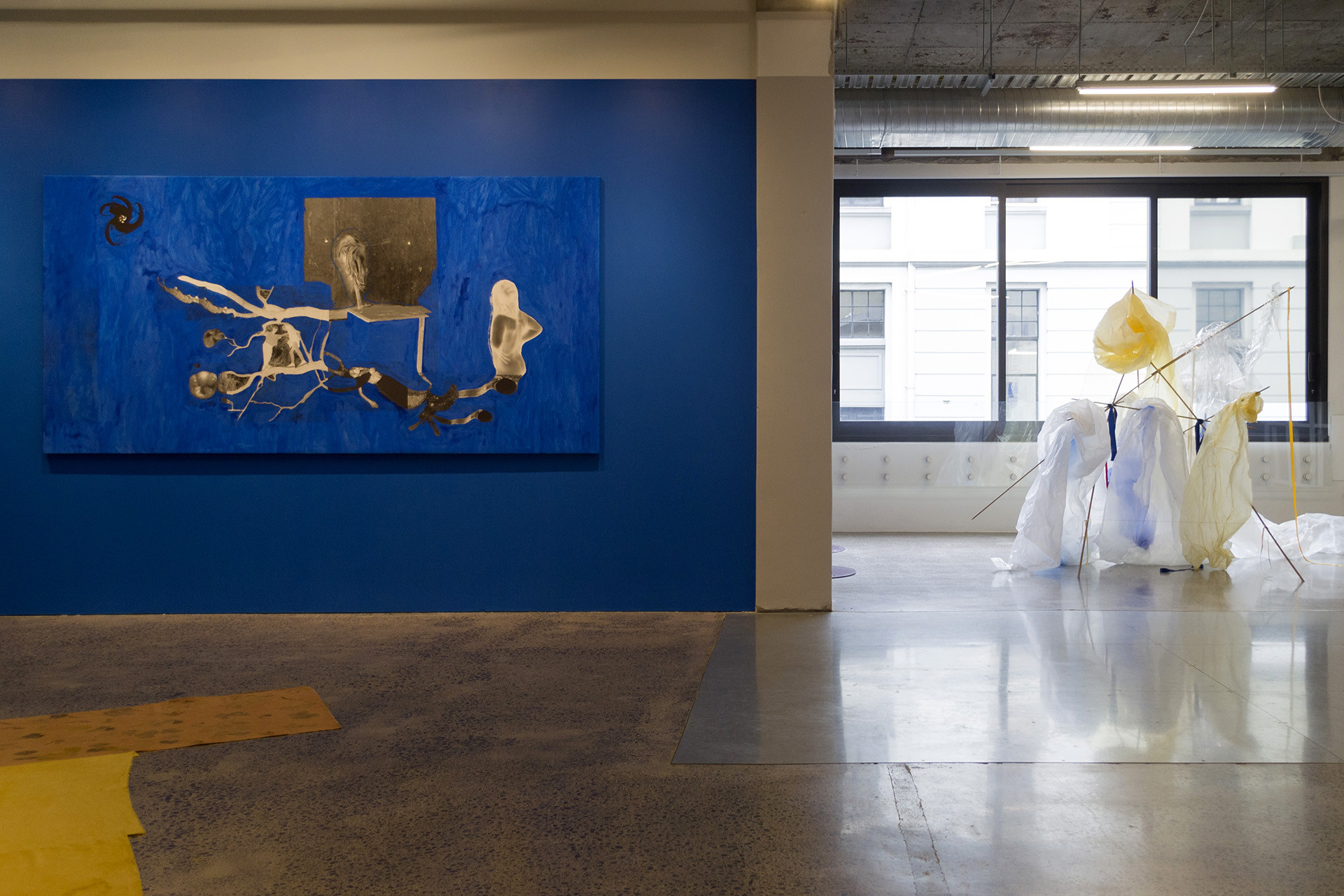
Scores for Transformation, 2023. Installation view.

Scores for Transformation, 2023. Installation view.

Review (a body of light), 2023. Özlem Altın. Detail.

Autoficción, 2020. Laida Lertxundi.

Autoficción, 2020. Laida Lertxundi.
Spanning multiple generations, this exhibition explores the ways in which the body is never simply a passive receiver but is essential to the shaping of the ways in which we access the world. Counter to many of the impulses of corrective violence normalised in the 20th century, these artworks play a tune of the fullest form; conjuring revolt, resistance, collapse, reverence, reform, and regeneration.
View full exhibition text
To conjure ‘score’ is to conjure the notation of sound. To conjure ‘score’ is also to conjure ‘the measure’ of things: goals achieved, failures experienced. To conjure transformation is to conjure the active playing of the tune suggested by what has been noted, what has been measured. Paper, soil, petals, lists, bandages—what tune do they play and who is playing?
Each artist included in this exhibition employs a process-based practice that draws out the intrinsically contingent nature of the score. Housed within each of the individual works on view in the gallery—textile, film, sculpture, collage—is the relational fullness of lived experience. These relations are tethered together through the range of where the tune is played: between people (the sharing of knowledge through whakapapa); site (a city once lived in); time (inherited histories, the passing of seasons); and even the law (the administrative reality of having a body that requires food, water, healthcare, and shelter).
Spanning multiple generations and contexts, this exhibition explores the ways in which the body is never simply a passive receiver but is essential to the shaping of the lens through which we access the world. Counter to many of the impulses of corrective violence normalised in the 20th century, these bodies play a tune of the ecstatic form. The instruments used are revolt, resistance, collapse, reverence, reform, and regeneration.
Biographies
-
Özlem Altın who lives and works in Berlin, explores the body at rest and the ‘inanimate in action’ in her paintings, collages, photographs, and artist books. To create her work, Altın digs through a photographic collection she has assembled over two decades combining found images with her own photographs into a dense constellation of amalgams. Most recently, Altın was part of the 59th Venice Biennale The Milk of Dreams, and has participated in, amongst others; Companion Pieces, MoMA, New York;The Seventh Continent, 16th Istanbul Biennial; and We don’t need another hero, 10th Berlin Biennial. Altın was guest-professor for photography in HGB Leipzig in 2020-2021, and is currently UMPRUM visiting artist at the academy in Prague.
-
Quishile Charan is an Indo-Fijian textile maker, researcher and writer living in Aotearoa New Zealand. Charan’s practice focuses on sustaining the shared cultural practices of craft, a knowledge system which she inherited through being her Aaji’s (grandmother) namesake. As a woman and descendant of Girmit (indentured labour), Charan undertakes her responsibility to build anti-colonial narratives for Girmitiya women, looking at forms of women’s resistance against colonialism and patriarchy, threaded throughout Fiji’s history. Through revaluing women’s work, such as craft, Charan explores how particular practices can function as contemporary forms of resistance to colonialism. Charan holds a Master of Visual Arts (Auckland University of Technology, 2019) where she is also currently a PhD Candidate in Visual Arts. She has exhibited widely across the motu as well as in Melbourne, Sydney, Mumbai, Gwangju, Berlin and Vienna.
-
Judith Hopf was born in Karlsruhe and has lived in Berlin since 1990 engaging in the discourse of that generation. In her work, including large-scale permanent outdoor sculpture, prints, videos, ceramics, paintings, and drawings she delves into the practices that structure the daily life of administered societies. She has had solo exhibitions at, amongst others, at KW Institute for Contemporary Art, Berlin; the Hammer Museum, Los Angeles; Museion, Bolzano, Italy; National Gallery of Denmark, Copenhagen; Maumaus, Lisbon; and Badischer Kunstverein, Karlsruhe. She has also participated in Documenta XIII, La Biennale de Montréal, and the Liverpool Biennial. She is Professor and Vice-Rector of Fine Arts at the Städelschule Art Academy in Frankfurt.
-
Laida Lertxundi is an artist and filmmaker from Los Angeles and Bilbao. Her films establish parallels between landscape and the body as centres of pleasure and experience in a process she calls Landscape Plus. Her work has been included in exhibitions and projects at MoMA, New York; High Line Art, New York; Whitney Biennial, New York; Hammer Museum, Los Angeles; Biennale de Lyon; and Tate Modern, London. Pedagogy is central to her practice, and she currently teaches at the École Nationale Supérieure des Beaux-Arts in Lyon. Her new artist’s book Daytime Noir will be released in the context of the exhibition Scores for Transformation.
-
Artist Rosemary Mayer (1943-2014) was actively involved in the New York art scene beginning in the late 1960s. She was a founding member of A.I.R. Gallery, the first cooperative gallery for women. Known primarily for her large-scale sculptures made with fabric, she also created works on paper, artist books, and outdoor installations, exploring temporality, history, and biography. As a critic and writer she contributed to various journals as well as translating the diary of Mannerist painter Jacopo da Pontormo. In the 1990s, she turned her attention to teaching and was a professor at LaGuardia Community College in Queens. Since Mayer’s death, her estate has worked to organise exhibitions and publications of her work. Mayer’s work has appeared in both solo and group exhibitions at, amongst others, Swiss Institute, New York; Kunsthalle Basel; Spike Island, Bristol; Ludwig Forum; Aachen; Lenbachhaus, Munich; and MoMA, New York.
Events
A guided tour through the work of Rosemary Mayer
Presences, Ghosts and Monuments a lecture by Marie Warsh at Te Pātaka Toi Adam Art Gallery, Te Whanganui-a-Tara Wellington
Te Karanga a Hape, KBA Matariki: Hosted Open Late
Quishile Charan leads a lino-cut and printing workshop
Book launch of Daytime Noir by Laida Lertxundi
Reading Room
Notes from a body
Screening Room

Judith Hopf
2023 programme
Each year we orbit around one question in the company of artists and through exhibitions and other programmes. Across the year we explore the edges of what this question offers us, and what artworks and their authors can weave together. In 2023 we ask “where does my body belong?” You can think of this as one exhibition in five parts, as a score played across a calendar, or maybe even as a forest.
Maree Horner
J.C. Sturm
Chevron Hassett
Özlem Altın
Quishile Charan
Judith Hopf
Laida Lertxundi
Rosemary Mayer
Alanis Obomsawin
Prairie Hatchard-McGill
Angela Pan
Hulita Koloi